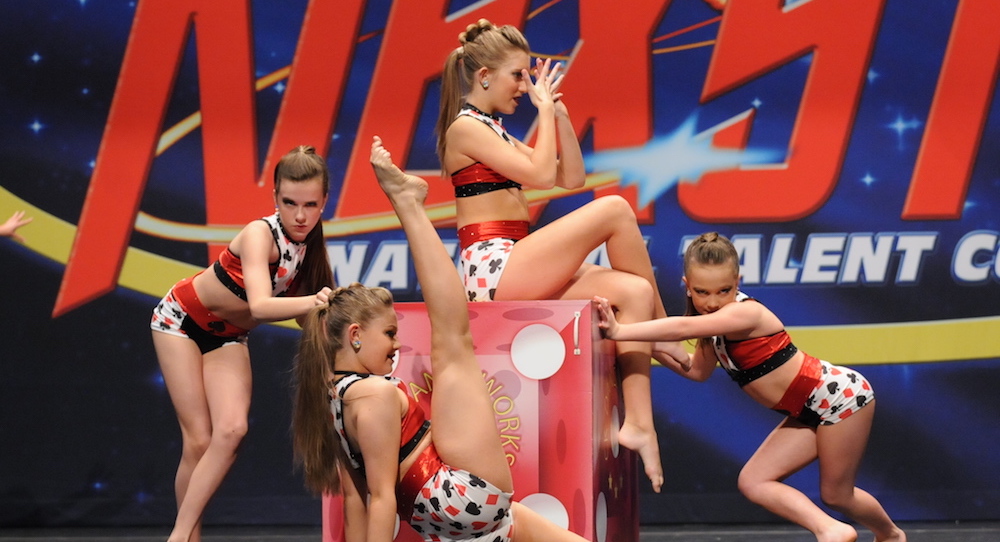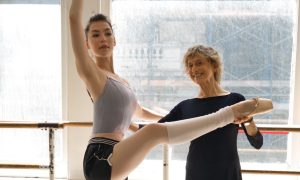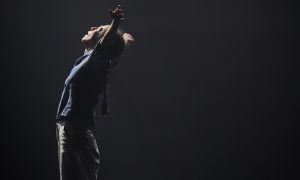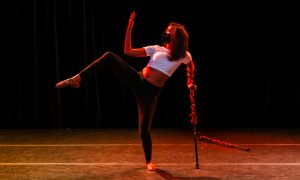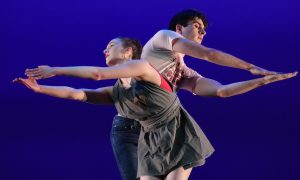Competition season is one of Dance Informa’s favorite times of year. Out come the rhinestones, the hairspray, the costumes, the routines and, of course, several articles on how to help you, the competition dancer. We’ve compiled a list of the seven best ways to catch the eye of your dance competition judges this year.
#1. Eye contact.
This does not mean that you have to look at the judges the whole routine. Actually, many judges would say they do not like when dancers stare at them. Judges do, however, appreciate when eye contact is made at some point and you, the dancer, recognize the judge’s presence.
#2. Personality.
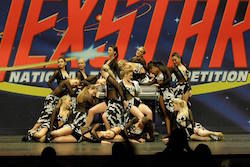
CK DanceWorks dancers at competition. Photo courtesy of CK DanceWorks.
The highest performance scores I’ve given in my judging career have been ones when the dancer on stage is showing me their personality through their movement and emotion. I love when a dancer smiles, and I can tell that they’re smiling because they’re happy to be on stage, in that moment, and not taking any moment for granted.
#3. Honesty.
With personality in mind, please realize that the judges can discern the difference between your real personality and a faked personality. Does this mean you should be stagnant and forget everything else if that’s what you feel like that day? No. But please, please, please remember that we are all human beings living a human experience on stage, just with some movement and feet pointing included. Be true and honest to yourself, and you’ll start to catch the attention of the judges (and audience, I’m sure).
#4. Risk-taking.
I once judged a piece at a competition where the dancer was shaking, almost uncontrollably, and was on the verge of crying. She had makeup running down her face but at the same time was so honest and had really wonderful technique when she did technical elements. I almost began crying myself, and so did the rest of the judging panel. I couldn’t tell you what her dance was specifically about because it was wonderfully abstract, yet relatable. But what I can tell you is that she won first overall senior solo. It was a risk, but it worked. Don’t be afraid to be vulnerable.
#5. Dynamics.
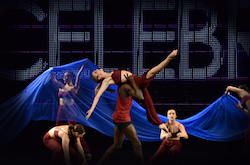
Photo courtesy of Celebrity Dance Competitions.
One thing that draws in your crowd and judges is dynamics. Not the steps you’re dancing, but how you’re dancing each step. Heavy, weak, resistant, soft, strong, smooth — just to name a few. It is difficult as a judge to critique a dancer’s piece when your movement has no dynamics. Coming from someone who was always told to “hold back because you have too much energy, Allison!”, I know it is hard for some dancers to find any dynamic in their dancing that isn’t 100 percent full out! But try to understand that all dance should not be yelled or thrown in the audience’s face the whole time, or it will be overwhelming. Find silences, subtleness and nuances in your routine that set you apart.
#6. Confidence.
I cannot stress this enough…confidence, confidence, confidence. If you’re shy, you can still have confidence about your shyness and how that informs your dancing. If you tend to struggle with confidence, my best advice is to take a mental moment backstage where you say to yourself over and over again, “I am enough, I am wonderful, I am the best, I can do this.” Now, I wouldn’t recommend saying this aloud in front of people because they’d think you’re completely full of yourself. But you almost have to trick your mind into believing that you can do anything you want, and with utter confidence.
#7. Clean lines/Clear technique.
Something that seems obvious, but is not often done, is dancing with clean and clear lines, which can catch the eyes of competition judges from the first eight counts of a routine. This does not mean that you have to be the most flexible. I love when all the dancers in a 20-person routine battement at the exact same height, or all have beautifully high passés, or perform a phrase in a contemporary routine with concise timing. This clean line rule is especially true in jazz and ballet routines when technique is more at the forefront of the dancing.
By Allison Gupton of Dance Informa.


